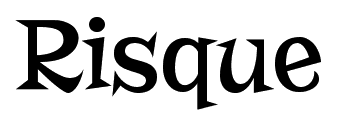it’s easy to become confused about these terms: advertising, marketing, promotion, public relations and publicity, and sales. The terms are often used interchangeably. However, they refer to different — but similar activities. Some basic definitions are provided below. A short example is also provided hopefully to help make the terms more clear to the reader.
One Definition of Advertising
Advertising is bringing a product (or service) to the attention of potential and current customers. Advertising is focused on one particular product or service. Thus, an advertising plan for one product might be very different than that for another product. Advertising is typically done with signs, brochures, commercials, direct mailings or e-mail messages, personal contact, etc.
One Definition of Promotion
Promotion keeps the product in the minds of the customer and helps stimulate demand for the product. Promotion involves ongoing advertising and publicity (mention in the press). The ongoing activities of advertising, sales and public relations are often considered aspects of promotions.
One Definition of Marketing
Marketing is the wide range of activities involved in making sure that you’re continuing to meet the needs of your customers and getting value in return. Marketing is usually focused on one product or service. Thus, a marketing plan for one product might be very different than that for another product. Marketing activities include “inbound marketing,” such as market research to find out, for example, what groups of potential customers exist, what their needs are, which of those needs you can meet, how you should meet them, etc. Inbound marketing also includes analyzing the competition, positioning your new product or service (finding your market niche), and pricing your products and services. “Outbound marketing” includes promoting a product through continued advertising, promotions, public relations and sales.
One Definition of Public relations
Public relations includes ongoing activities to ensure the overall company has a strong public image. Public relations activities include helping the public to understand the company and its products. Often, public relations are conducted through the media, that is, newspapers, television, magazines, etc. As noted above, public relations is often considered as one of the primary activities included in promotions.
One Definition of Publicity
Publicity is mention in the media. Organizations usually have little control over the message in the media, at least, not as they do in advertising. Regarding publicity, reporters and writers decide what will be said.
One Definition of Sales
Sales involves most or many of the following activities, including cultivating prospective buyers (or leads) in a market segment; conveying the features, advantages and benefits of a product or service to the lead; and closing the sale (or coming to agreement on pricing and services). A sales plan for one product might be very different than that for another product.
An Example of the Definitions
The following example may help to make the above five concepts more clear. I recently read that the story comes from the Reader’s Digest, a quote found in “Promoting Issues and Ideas” by M. Booth and Associates, Inc. (Thanks to Jennifer M. Seher, participant in the [email protected] online discussion group.)
“… if the circus is coming to town and you paint a sign saying ‘Circus Coming to the Fairground Saturday’, that’s advertising. If you put the sign on the back of an elephant and walk it into town, that’s promotion. If the elephant walks through the mayor’s flower bed, that’s publicity. And if you get the mayor to laugh about it, that’s public relations.” If the town’s citizens go the circus, you show them the many entertainment booths, explain how much fun they’ll have spending money at the booths, answer their questions and ultimately, they spend a lot at the circus, that’s sales.
Inbound Marketing Includes Market Research to Find Out:
- What specific groups of potential customers/clients (markets) might have which specific needs (nonprofits often already have a very clear community need in mind when starting out with a new program — however, the emerging practice of nonprofit business development, or earned income development, often starts by researching a broad group of clients to identify new opportunities for programs)
- How those needs might be met for each group (or target market), which suggests how a product might be designed to meet the need (nonprofits might think in terms of outcomes, or changes, to accomplish among the groups of clients in order to meet the needs)
- How each of the target markets might choose to access the product, etc. (its “packaging”)
- How much the customers/clients might be willing pay and how (pricing analysis)
- Who the competitors are (competitor analysis)
- How to design and describe the product such that customers/clients will buy from the organization, rather than from its competitors (its unique value proposition)
- How the product should be identified — its personality — to be most identifiable (its naming and branding)
Outbound Marketing Includes:
- Advertising and promotions (focused on the product)
- Sales
- Public and media relations (focused on the entire organization)
- Customer service
- Customer satisfaction
Too often, people jump right to the outbound marketing. As a result, they often end up trying to push products onto people who really don’t want the products at all. Effective inbound marketing often results in much more effective — and less difficult — outbound marketing and sales.

Recent Comments